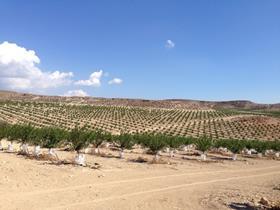
Spain’s stonefruit producers have hailed the news that they will be able to export peaches and plums to China from next season as a huge opportunity for the entire fruit and vegetable industry to raise its profile in this important market.
While the Chinese market has been closed to Spanish stonefruit up to now, a growing number of companies have established regular programmes to Asia, particularly in Hong Kong, Singapore and Malaysia. Seville-based SAT Royal recently entered the Asian market carrying out its first shipments of pluots to Hong Kong earlier this year. President José Gandía says the preference among Chinese consumers for very sweet, large sized fruit is well suited to the company’s varietal offer. “We think there is an interesting market for exceptional fruit,” he tells Eurofruit.
Campo y Tierra del Jerte has been exporting to Asia for four years and the region forms a key part of the company’s expansion strategy. Overseas sales manager Raúl Heras explains that much of its focus has been on developing varieties with sufficient quality and shelf life to reach distant markets. “I believe we have demonstrated that we have no trouble meeting even the most stringent phytosanitary conditions imposed by the Asian markets,” he says.
However, David Reynau of Valencia-based Consorfrut sounds a note of caution: “I hope that the companies that do decide to export to China do so with the right quality and at the right prices,” he says. “Unfortunately, past experience shows that too often we have flooded new markets, driving down quality and price.”
He points out that long distance will limit the varieties that Spain is able to ship to China. “Up to now, plums are the only stonefruit we have exported that has had to withstand a journey of 30 days or more, specifically Black Diamond, Larry Anne and Angeleno. In terms of peaches and nectarines we need to carry out more trials to analyse the shelf life of each product and its condition on arrival.”
Spain’s agrifood exports to China have risen sharply in the past five years, reaching €658m in 2014. Up to now, citrus has been one of the few fresh produce items that can be exported directly to mainland China. But few companies have taken the plunge due to the logistical, regulatory and phytosanitary hurdles they must overcome. Nevertheless, ongoing improvements in logistics and cold chain infrastructure mean the market is becoming more accessible every year.



